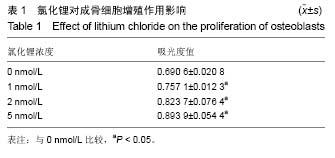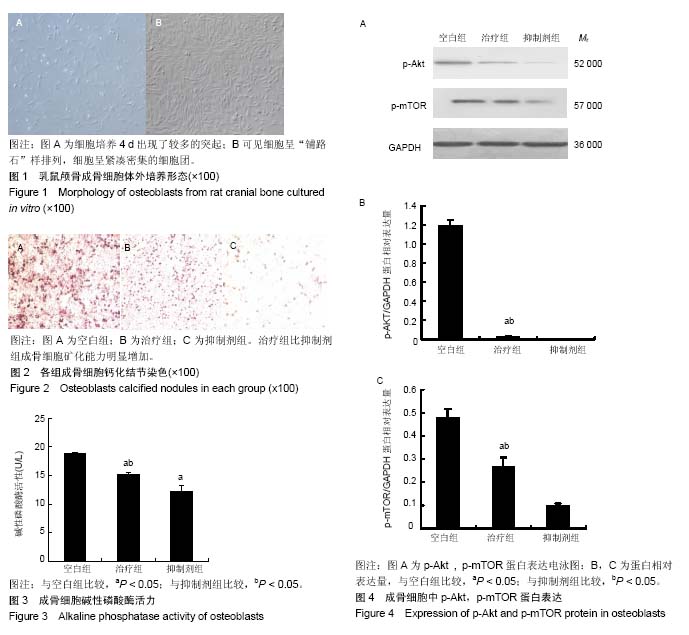| [1] Mithal A, Bhadada S, Bansal B. Chapter-073b Diagnosis of Osteoporosis and Assessment of Fracture Risk[M]// ESI Manual of Clinical Endocrinology. 2015. [2] Cano A, Chedraui P, Goulis DG, et al. Calcium in the prevention of postmenopausal osteoporosis: EMAS clinical guide.Maturitas. 2018; 107:7-12. [3] Ye LI, Shan-Shan L, Tang GY, et al. Effects of Morinda Officinalis Capsule on Osteoporosis in Ovariectomized Rats. Chin J Nat Med. 2014;12(3):204-212.[4] Piao H, Chu X, Lv W, et al. Involvement of receptor-interacting protein 140 in estrogen-mediated osteoclasts differentiation, apoptosis, and bone resorption. J Physiol Sci. 2017;67(1):141-150.[5] Matsumoto S, Tominari T, Matsumoto C, et al. Effects of Polymethoxyflavonoids on Bone Loss Induced by Estrogen Deficiency and by LPS-Dependent Inflammation in Mice. Pharmaceuticals (Basel). 2018 Jan 20;11(1). pii: E7. [6] Sadana G, Singh R, Chatha PS, et al. Role of bisphosphonates in management of osteoporosis and its adverse effects on the jaw. Archives of Medicine and Health Sciences.2015; 3(2):227.[7] González-García I, Martínez de Morentin PB, Estévez-Salguero Á, et al. mTOR signaling in the arcuate nucleus of the hypothalamus mediates the anorectic action of estradiol. J Endocrinol. 2018;238(3):177-186.[8] Arioka M, TakahashiYanaga F, Sasaki M,et al. Acceleration of bone regeneration by local application of lithium: Wnt signal-mediated osteoblastogenesis and Wnt signal-independent suppression of osteoclastogenesis. Biochem Pharmacol. 2014;90(4):397-405.[9] Jakobsson E, Argüello-Miranda O, Chiu SW, et al. Towards a Unified Understanding of Lithium Action in Basic Biology and its Significance for Applied Biology. J Membr Biol. 2017;250(6):587-604. [10] Yang Y, Li Z, Chen G,et al. GSK3β regulates ameloblast differentiation via Wnt and TGF-β pathways. J Cell Physiol. 2018;233(7):5322-5333. [11] Kim Y, Kim J, Ahn M, et al. Lithium ameliorates rat spinal cord injury by suppressing glycogen synthase kinase-3β and activating heme oxygenase-1. Anat Cell Biol. 2017;50(3):207-213. [12] O’Leary O, Nolan Y. Glycogen Synthase Kinase-3 as a Therapeutic Target for Cognitive Dysfunction in Neuropsychiatric Disorders. Cns Drugs.2015;29(1):1-15. [13] Bian Q, Shi T, Chuang DM, et al. Lithium reduces ischemia-induced hippocampal CA1 damage and behavioral deficits in gerbils. Brain Res. 2007;1184:270-276.[14] Zhu Z, Yin J, Guan J, et al. Lithium stimulates human bone marrow derived mesenchymal stem cell proliferation through GSK-3β-dependent β-catenin/Wnt pathway activation. FEBS J. 2014;281(23):5371-5389.[15] Wang R, Gao D, Zhou Y, et al. High glucose impaired estrogen receptor alpha signaling via β-catenin in osteoblastic MC3T3-E1.J Steroid Biochem Mol Biol.2017; 174:276.[16] 刘伟,罗自强,任璐.雌激素受体α36参与淫羊藿素对MG63细胞的促增殖和抗凋亡作用[J].生理学报, 2018, 70(5): 474-480. [17] Li Q, Wu Y, Kang N. Marrow Adipose Tissue: Its Origin, Function, and Regulation in Bone Remodeling and Regeneration. Stem Cells Int. 2018;2018(1):1-11. [18] Kasukawa Y, Miyakoshi N, Shimada Y. Effects of Vitamin D on Bone and Skeletal Muscle[M]// Osteoporosis in Orthopedics. Springer Japan, 2016. [19] 吴世超,王颖姝,轩宾,等.建立双膦酸盐性颌骨坏死动物模型[J].中国组织工程研究,2017,21(36):5799-5805.[20] Rodan G A, Martin T J. Therapeutic Approaches to Bone Diseases. Science.2000; 289(5484):1508-1514.[21] 刘兴宇,王乾兴,路健,等.氯化锂激活的Wnt/β-catenin信号通路对激素型骨质疏松的防护作用[J].第二军医大学学报, 2017, 38(2):201-205.[22] 蔡金亚,李俊豪,丁石荟,等.雌激素受体β选择性配体的研究进展[J].药学学报, 2015(6):658-667.[23] 李红明,高原,胡小雄.淫羊藿苷促进骨膜细胞增殖及其机制[J]. 中国组织工程研究, 2018, 22(4):505-509.[24] Sobrino A, Vallejo S, Novella S, et al. Mas receptor is involved in the estrogen-receptor induced nitri coxide-dependent vasorelaxation. Biochem Pharmacol. 2017;129:67-72.[25] 黎丽,韩春春,刘秀云,等. PI3K-Akt-mTORC1信号途径在细胞生长增殖中的调控作用[J].生物学杂志,2014, 31(1):75-77.[26] Sun H, Kim JK, Mortensen R, et al. Osteoblast-targeted suppression of PPARγ increases osteogenesis through activation of mTOR signaling. Stem Cells.2013; 31(10):2183-2192.[27] Wang L, Zhang L, Shen W, et al. High expression of VEGF and PI3K in glioma stem cells provides new criteria for the grading of gliomas. Exp Ther Med. 2016;11(2):571-576.[28] Jansen LA, Mirzaa GM, Ishak GE, et al. PI3K/AKT pathway mutations cause a spectrum of brain malformations from megalencephaly to focal cortical dysplasia. Brain. 2015;138(Pt 6):1613-28.[29] Yang S, Abbott GW, Gao WD, et al. Involvement of Glycogen Synthase Kinase-3β in Liver Ischemic Conditioning Induced Cardioprotection against Myocardial Ischemia and Reperfusion Injury in Rats. J Appl Physiol (1985). 2017 May 1;122(5):1095-1105.[30] Butler DE, Marlein C, Walker HF, et al. Inhibition of the PI3K/AKT/mTOR pathway activates autophagy and compensatory Ras/Raf/MEK/ERK signalling in prostate cancer. Oncotarget. 2017;8(34):56698-56713.[31] Li X, Hu X, Wang J, et al. Inhibition of autophagy via activation of PI3K/Akt/mTOR pathway contributes to the protection of hesperidin against myocardial ischemia/reperfusion injury. Int J Mol Med. 2018; 42(4):1917-1924.[32] Zhang C, Jia X, Wang K, et al. Polyphyllin VII Induces an Autophagic Cell Death by Activation of the JNK Pathway and Inhibition of PI3K/AKT/ mTOR Pathway in HepG2 Cells. Plos One.2016;11(1): e0147405.[33] Limon JJ, Fruman DA. Akt and mTOR in B Cell Activation and Differentiation. Front Immunol. 2012;3:228.[34] Daniele S, Costa B, Zappelli E, et al. Combined inhibition of AKT/mTOR and MDM2 enhances Glioblastoma Multiforme cell apoptosis and differentiation of cancer stem cells. Sci Rep. 2015; 5:9956.[35] Lee JE, Lim MS, Park JH, et al. S6K Promotes Dopaminergic Neuronal Differentiation Through PI3K/Akt/mTOR-Dependent Signaling Pathways in Human Neural Stem Cells. Mol Neurobiol. 2016;53(6):3771-3782.[36] Isomoto S, Hattori K, Ohgushi H, et al. Rapamycin as an inhibitor of osteogenic differentiation in bone marrow-derived mesenchymal stem cells. Orthop Sci. 2007;12(1):83-88.[37] Singha UK, Yu J, Yu S, et al. Rapamycin inhibits osteoblast proliferation and differentiation in MC3T3‐E1 cells and primary mouse bone marrow stromal cells. J Cell Biochem. 2008;103(2):434-446. |
.jpg) 文题释义:
雌激素受体:可位于细胞膜、细胞质或细胞核。经典的核受体位于细胞核,其蛋白质在翻译后短暂位于胞浆,故可在细胞质检测到。扩散到细胞核的雌激素与其核受体结合后引发基因调控机制,调节下游基因的转录。
启动子:是RNA聚合酶识别、结合和开始转录的一段DNA 序列,它含有RNA聚合酶特异性结合和转录起始所需的保守序列,启动子本身不被转录。启动子的特性最初是通过能增加或降低基因转录速率的突变而鉴定的。启动子一般位于转录起始位点的上游。
文题释义:
雌激素受体:可位于细胞膜、细胞质或细胞核。经典的核受体位于细胞核,其蛋白质在翻译后短暂位于胞浆,故可在细胞质检测到。扩散到细胞核的雌激素与其核受体结合后引发基因调控机制,调节下游基因的转录。
启动子:是RNA聚合酶识别、结合和开始转录的一段DNA 序列,它含有RNA聚合酶特异性结合和转录起始所需的保守序列,启动子本身不被转录。启动子的特性最初是通过能增加或降低基因转录速率的突变而鉴定的。启动子一般位于转录起始位点的上游。.jpg) 文题释义:
雌激素受体:可位于细胞膜、细胞质或细胞核。经典的核受体位于细胞核,其蛋白质在翻译后短暂位于胞浆,故可在细胞质检测到。扩散到细胞核的雌激素与其核受体结合后引发基因调控机制,调节下游基因的转录。
启动子:是RNA聚合酶识别、结合和开始转录的一段DNA 序列,它含有RNA聚合酶特异性结合和转录起始所需的保守序列,启动子本身不被转录。启动子的特性最初是通过能增加或降低基因转录速率的突变而鉴定的。启动子一般位于转录起始位点的上游。
文题释义:
雌激素受体:可位于细胞膜、细胞质或细胞核。经典的核受体位于细胞核,其蛋白质在翻译后短暂位于胞浆,故可在细胞质检测到。扩散到细胞核的雌激素与其核受体结合后引发基因调控机制,调节下游基因的转录。
启动子:是RNA聚合酶识别、结合和开始转录的一段DNA 序列,它含有RNA聚合酶特异性结合和转录起始所需的保守序列,启动子本身不被转录。启动子的特性最初是通过能增加或降低基因转录速率的突变而鉴定的。启动子一般位于转录起始位点的上游。

.jpg) 文题释义:
雌激素受体:可位于细胞膜、细胞质或细胞核。经典的核受体位于细胞核,其蛋白质在翻译后短暂位于胞浆,故可在细胞质检测到。扩散到细胞核的雌激素与其核受体结合后引发基因调控机制,调节下游基因的转录。
启动子:是RNA聚合酶识别、结合和开始转录的一段DNA 序列,它含有RNA聚合酶特异性结合和转录起始所需的保守序列,启动子本身不被转录。启动子的特性最初是通过能增加或降低基因转录速率的突变而鉴定的。启动子一般位于转录起始位点的上游。
文题释义:
雌激素受体:可位于细胞膜、细胞质或细胞核。经典的核受体位于细胞核,其蛋白质在翻译后短暂位于胞浆,故可在细胞质检测到。扩散到细胞核的雌激素与其核受体结合后引发基因调控机制,调节下游基因的转录。
启动子:是RNA聚合酶识别、结合和开始转录的一段DNA 序列,它含有RNA聚合酶特异性结合和转录起始所需的保守序列,启动子本身不被转录。启动子的特性最初是通过能增加或降低基因转录速率的突变而鉴定的。启动子一般位于转录起始位点的上游。